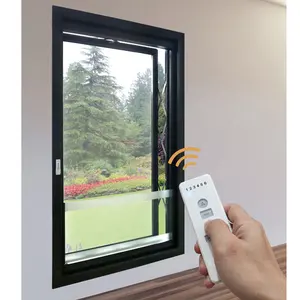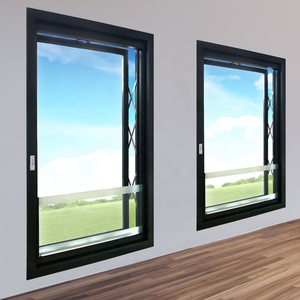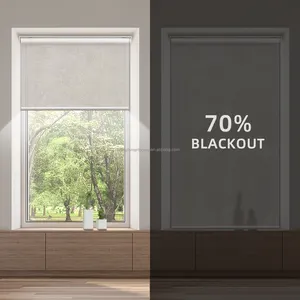(1948 products available)




















































































































































































































automatic home window closer play a crucial role in the construction and real estate sectors, providing essential solutions for door management in various environments. These devices are designed to ensure doors close automatically and securely, enhancing both safety and convenience. Typically installed at the top of doors, automatic home window closer use hydraulic or pneumatic mechanisms to control the speed and force of the door's movement. They are vital in commercial and residential buildings, ensuring that doors remain closed when not in use, thereby contributing to energy efficiency and security. As a result, automatic home window closer have become indispensable components in modern architecture.
The market offers a wide range of automatic home window closer to cater to different needs and door types. Overhead door closers are among the most common, featuring a mechanism mounted on the door frame. These are often used in high-traffic areas such as schools and office buildings due to their durability and reliability. Floor door closers, another type, are integrated into the floor and are ideal for glass doors or where aesthetics are a priority. Concealed door closers, as the name suggests, are hidden within the door or frame, providing a sleek appearance while maintaining functionality. Each type of automatic home window closer is engineered to meet specific requirements, ensuring optimal performance for its intended use.
automatic home window closer offer a multitude of functionalities that enhance the usability and safety of doors. One of their primary functions is to ensure that doors close automatically, which is crucial for maintaining climate control and security within a building. Features such as adjustable closing speed, backcheck, and delayed action allow users to tailor the door's operation to their specific needs. For instance, the backcheck feature prevents the door from being opened too forcefully, which can be particularly useful in windy conditions. The delayed action feature allows the door to remain open for a longer period, providing easier access for those with mobility challenges. These features make automatic home window closer versatile tools in managing building access.
The production of automatic home window closer involves the use of various materials and components, each contributing to the device's overall performance and durability. Common materials include aluminum and steel, which provide strength and resistance to wear and tear. The internal mechanism typically comprises hydraulic fluid, which regulates the door's motion, ensuring smooth and controlled closure. Some models incorporate rubber or nylon seals to prevent leaks and enhance longevity. The choice of materials impacts the durability, efficiency, and cost of automatic home window closer , allowing manufacturers to tailor their products to different applications and price points. As technology advances, manufacturers are exploring new materials and designs to improve the efficiency and aesthetics of these essential devices.
Proper installation and maintenance are crucial for the effective operation of automatic home window closer . During installation, it's important to ensure that the closer is correctly aligned with the door and frame to prevent malfunction and ensure optimal performance. Regular maintenance involves checking for leaks, ensuring that the hydraulic fluid is at the correct level, and adjusting the settings to maintain the desired closing speed and force. Periodic lubrication of moving parts can also extend the life of automatic home window closer , reducing the likelihood of noise and wear. By adhering to manufacturer guidelines and conducting regular inspections, users can ensure that their door closer continues to function efficiently and reliably, contributing to the overall safety and security of the building.
When selecting automatic home window closer , several factors should be considered to ensure optimal performance and functionality. One crucial aspect is the type of door and its location within the building. For exterior doors exposed to weather conditions, robust automatic home window closer with weather-resistant features are essential. Additionally, the weight and size of the door play a significant role; heavier doors require automatic home window closer with higher closing force to function effectively. It's also important to consider the frequency of use and traffic levels; high-traffic areas benefit from durable models designed for frequent operation.
Another consideration is the aesthetic appeal of automatic home window closer . While functionality is paramount, the design and appearance can influence the overall look of the space. Concealed or floor-mounted options provide a sleek and unobtrusive appearance, ideal for modern architectural designs. The finish and color of automatic home window closer should complement the existing decor and style of the building. Additionally, features such as adjustable closing speeds and delayed actions can enhance the usability and convenience of the installation.
automatic home window closer can be installed on a variety of door types, including wooden, metal, and glass doors. However, the compatibility largely depends on the weight and size of the door. Heavier doors may require automatic home window closer with a higher closing force, while lighter doors can function well with standard models. Glass doors often benefit from floor-mounted or concealed options to maintain aesthetics.
Environmental conditions can significantly impact the performance of automatic home window closer . In areas with high winds, backcheck features are essential to prevent doors from opening too forcefully. Similarly, temperature fluctuations can affect the hydraulic fluid within automatic home window closer , necessitating models designed to withstand extreme temperatures. Weather-resistant finishes and seals can prolong the life of automatic home window closer in outdoor settings.
Adjustable features in automatic home window closer offer significant benefits, allowing customization to meet specific needs. Adjustable closing speeds ensure that doors close at the desired pace, enhancing safety and convenience. Delayed action features provide additional time for entry, particularly useful in public buildings or for individuals with mobility challenges. These features enable automatic home window closer to adapt to changing requirements and conditions.
Yes, many modern automatic home window closer can be integrated into smart building systems. This integration allows for automated control and monitoring, enhancing security and efficiency. Smart automatic home window closer can be programmed to respond to specific conditions, such as fire alarms or security breaches, ensuring doors operate as needed during emergencies. This technology provides a seamless blend of convenience and safety.
Regular maintenance is crucial for extending the life of automatic home window closer . This includes checking for leaks and ensuring the hydraulic fluid is at the correct level. Lubricating moving parts reduces friction and wear, preventing noise and malfunction. Periodic inspections and adjustments help maintain optimal performance, ensuring automatic home window closer continue to function reliably over time.